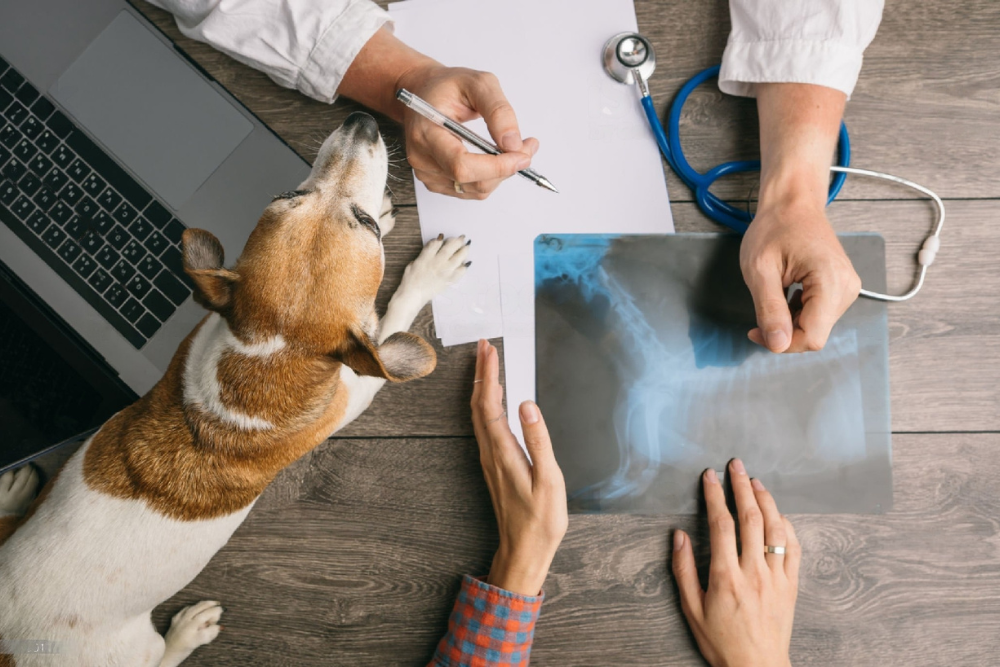Pet OFA Radiographs
Pet OFA Radiographs, also known as Orthopedic Foundation for Animals radiographs, are a specialized type of X-ray imaging used to evaluate the orthopedic health of both Large Animals and Companion Animals.
Pet OFA Radiographs in Centuria, WI
The OFA is an organization that maintains a registry of canine hip and elbow evaluations.

Pet OFA Radiographs
The primary purpose of OFA Radiographs is to assess the hip and elbow joints of dogs for signs of dysplasia, a common orthopedic condition characterized by abnormal joint development.
Screening for Hip Dysplasia:
- For hip dysplasia screening, the dog is positioned on its back, and a series of X-rays are taken to capture the hip joints.
- The X-rays provide detailed images of the hip joint’s structure, including the hip socket (acetabulum) and the femoral head (the ball of the hip joint).
- The radiographs help identify signs of hip dysplasia, such as laxity or looseness in the joint, irregular joint surfaces, or the presence of arthritic changes.
- Elbow dysplasia screening involves taking X-rays of the dog’s elbows.
- This evaluation helps detect abnormalities in the elbow joint, such as fragmented coronoid process (FCP), osteochondritis dissecans (OCD), and ununited anconeal process (UAP).
Certification and Registration:
- Once the radiographs are taken, they are submitted to the Orthopedic Foundation for Animals for evaluation and certification.
- Dogs that meet the established criteria for hip and elbow health receive OFA certification, and their results are recorded in the OFA database.
Breeders and Health Screening:
- Many breeders use OFA Radiographs as a tool to assess the orthopedic health of potential breeding dogs.
- By screening for hip and elbow dysplasia, breeders can make informed breeding decisions to reduce the risk of passing these conditions to offspring.
Pet OFA Radiographs are a valuable tool in promoting the orthopedic health of dogs, particularly in breeds susceptible to hip and elbow dysplasia. Early detection and responsible breeding practices can help reduce the prevalence of these conditions and improve the overall well-being of canine companions.

